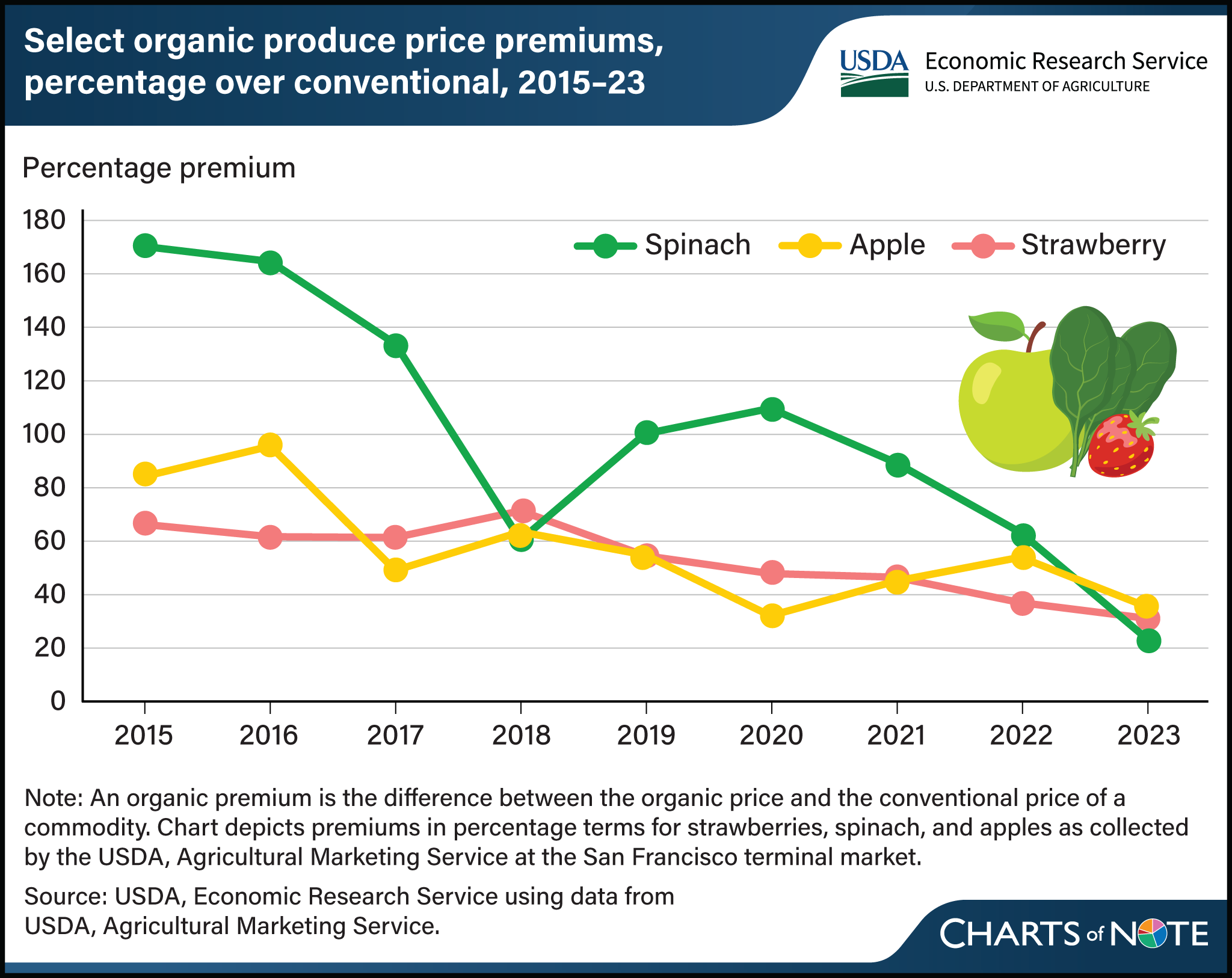Gap between select organic and conventional produce prices has narrowed in recent years
- by Sharon Raszap Skorbiansky
- 2/11/2025

Producers of organic products usually receive higher prices for their commodities over conventional commodities. This price premium allows organic farmers to recoup costs associated with organic production. However, the price premiums for products such as organic apples, strawberries, and spinach—the top organic products by value of production—have been decreasing since 2015. Food price inflation in 2022 was at its highest since 1979, and consumers experienced higher food prices both for organic and conventional produce. That led to a narrowing of premiums between wholesale prices of organic and conventional produce as conventional prices increased at a higher rate than those for organic produce. The Organic Trade Association reports that organic producers were hesitant during the Coronavirus (COVID-19) pandemic to further increase prices of their products given the higher price point faced by consumers. This chart appears in the USDA, Economic Research Service report Organic Situation Report, 2025 Edition, published in February 2025. See also the Amber Waves article Rising Consumer Demand Reshapes Landscape for U.S. Organic Farmers, published in November 2023.

